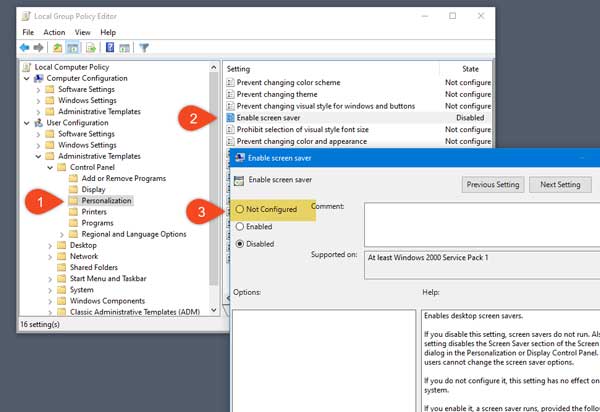

HKEY_USERS\.How to Enable or Disable Screen Saver Password Protection in WindowsĪ screen saver is a moving picture or pattern that displays on the screen(s) of your PC after you have not been active on the PC for specified period of time to wait. HKEY_CURRENT_USER\Software\Policies\Microsoft\Windows\Control Panel\Desktop Again the last 3 keys may be slightly different depending on users. If you enable it in Group Policy "ScreenSaveActive" appears in these keys. HKEY_USERS\S-1-5-18\Control Panel\Desktop HKEY_USERS\.DEFAULT\Control Panel\Desktop The last two keys may vary depending on users etc. "ScreenSaveActive" appears in these locations when the Group Policy is not configured. See what location it is pointing to, and whether the Access Permissions for the Registry Key are correct. Htt p://suppor t.microsof t.com/defa ult.aspx?s cid=kb en- us Q811460 #appliestoĬheck the Value "SCRNSAVE.EXE" and "ScreenSaveActive". The Screen Saver Policy Settings Are Not Enforced on a User's Computer Second, the screensaver timeout is set to a nonzero value through the setting or Control Panel. If you enable it via Group Policy, a screen saver runs, provided the following two conditions hold: First, a valid screensaver on the client is specified through the "Screensaver executable name" setting or through Control Panel on the client computer. The culprit was MRU Blaster by Javacool Software. Thread779-639552: Windows XP Screensaver Timeout Problem Thread779-453976: XP Pro Screensaver Quit Working Some software like MRU Blaster by Javacool Software can cause Screensaver problems.


 0 kommentar(er)
0 kommentar(er)
